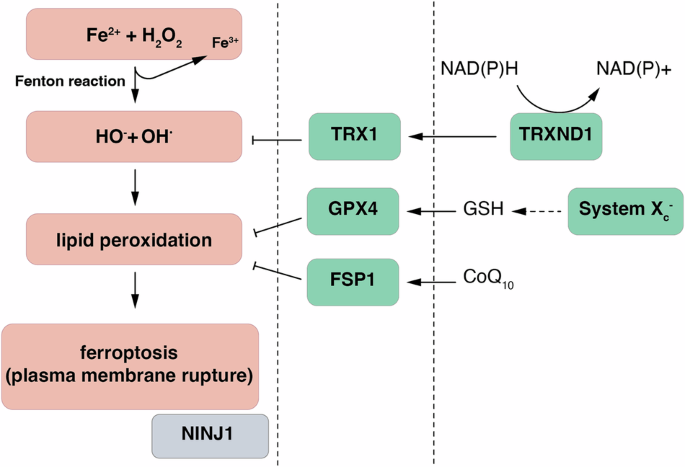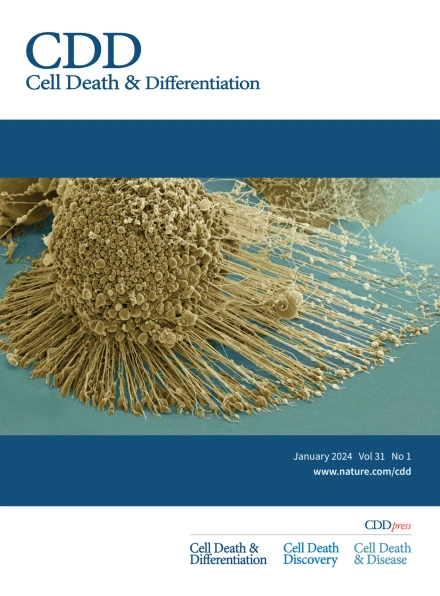Ferroptosis-based advanced therapies as treatment approaches for metabolic and cardiovascular diseases
IF 13.7
1区 生物学
Q1 BIOCHEMISTRY & MOLECULAR BIOLOGY
引用次数: 0
Abstract
Ferroptosis has attracted attention throughout the last decade because of its tremendous clinical importance. Here, we review the rapidly growing body of literature on how inhibition of ferroptosis may be harnessed for the treatment of common diseases, and we focus on metabolic and cardiovascular unmet medical needs. We introduce four classes of preclinically established ferroptosis inhibitors (ferrostatins) such as iron chelators, radical trapping agents that function in the cytoplasmic compartment, lipophilic radical trapping antioxidants and ninjurin-1 (NINJ1) specific monoclonal antibodies. In contrast to ferroptosis inducers that cause serious untoward effects such as acute kidney tubular necrosis, the side effect profile of ferrostatins appears to be limited. We also consider ferroptosis as a potential side effect itself when several advanced therapies harnessing small-interfering RNA (siRNA)-based treatment approaches are tested. Importantly, clinical trial design is impeded by the lack of an appropriate biomarker for ferroptosis detection in serum samples or tissue biopsies. However, we discuss favorable clinical scenarios suited for the design of anti-ferroptosis clinical trials to test such first-in-class compounds. We conclude that targeting ferroptosis exhibits outstanding treatment options for metabolic and cardiovascular diseases, but we have only begun to translate this knowledge into clinically relevant applications.


将基于铁蛋白沉积的先进疗法作为代谢和心血管疾病的治疗方法
过去十年来,铁蛋白沉积症因其巨大的临床重要性而备受关注。在此,我们回顾了快速增长的有关如何利用抑制铁蛋白沉积来治疗常见疾病的文献,并重点关注代谢和心血管方面尚未满足的医疗需求。我们介绍了四类临床前已确立的铁突变抑制剂(ferrostatins),如铁螯合剂、在细胞质中发挥作用的自由基捕获剂、亲脂自由基捕获抗氧化剂和ninjurin-1(NINJ1)特异性单克隆抗体。与可导致急性肾小管坏死等严重不良反应的铁蛋白诱导剂相比,铁锈色素的副作用似乎有限。在测试几种利用基于小干扰 RNA(siRNA)治疗方法的先进疗法时,我们也将铁蛋白沉积本身视为一种潜在的副作用。重要的是,由于缺乏适当的生物标志物来检测血清样本或组织活检中的铁沉着病,临床试验设计受到了阻碍。不过,我们讨论了适合设计抗铁细胞减少症临床试验的有利临床方案,以测试此类首创化合物。我们的结论是,以铁蛋白沉积为靶点可为代谢和心血管疾病提供出色的治疗方案,但我们才刚刚开始将这些知识转化为临床应用。
本文章由计算机程序翻译,如有差异,请以英文原文为准。
求助全文
约1分钟内获得全文
求助全文
来源期刊

Cell Death and Differentiation
生物-生化与分子生物学
CiteScore
24.70
自引率
1.60%
发文量
181
审稿时长
3 months
期刊介绍:
Mission, vision and values of Cell Death & Differentiation:
To devote itself to scientific excellence in the field of cell biology, molecular biology, and biochemistry of cell death and disease.
To provide a unified forum for scientists and clinical researchers
It is committed to the rapid publication of high quality original papers relating to these subjects, together with topical, usually solicited, reviews, meeting reports, editorial correspondence and occasional commentaries on controversial and scientifically informative issues.
 求助内容:
求助内容: 应助结果提醒方式:
应助结果提醒方式:


